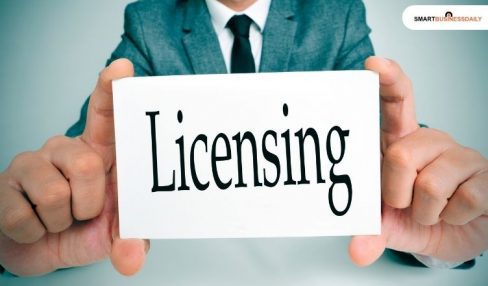A Beginner’s Guide To Starting A Business In Minnesota
5 Mins Read
Published on: 10 January 2024
Last Updated on: 14 November 2024

toc impalement
Launching a business in Minnesota goes beyond mere entrepreneurship; it’s about fostering a vision and playing a role in a flourishing economic scene. The state’s varied economy and encouraging business atmosphere make it a prime spot for kickstarting your business ambitions.
For those embarking on this path, particularly for startups like moving companies in Minneapolis, this guide offers a comprehensive roadmap to grasp and smoothly traverse the complexities of initiating a business in MN.
Understanding Minnesota’s Business Landscape

A. The Economic Climate
Minnesota’s economy is a tapestry of various sectors, including healthcare, technology, agriculture, and retail. This diversity presents an array of opportunities for new businesses. Understanding these economic trends is critical in identifying market gaps and potential growth areas. Recognizing which sectors are flourishing can guide you in aligning your business idea with market demands.
B. Regulatory Environment
The state is recognized for its business-friendly regulatory environment. Navigating legal requirements can be daunting, but Minnesota offers resources to help new business owners understand and comply with these regulations. Familiarizing yourself with state and federal laws early in your planning process is essential for a hassle-free business operation.
Crafting Your Business Idea

A. Identifying Your Niche
Your business journey begins with a unique idea. Whether it’s a revolutionary tech solution or a cozy local bakery, your business should address a specific market need. Assess the current market and look for unmet needs or areas for improvement. Your niche should not only align with your passions but also with market trends and consumer demand.
B. Market Research
Solid market research is the backbone of any successful business. This involves analyzing your target audience, understanding their preferences, and identifying your competitors. This research will validate your business concept and provide insights into developing strategies that distinguish your business in the market.
Setting Up Your Business
A. Choosing A Business Structure

Your choice of business structure (be it an LLC, corporation, partnership, or sole proprietorship) impacts everything from taxation to personal liability. Each structure has its pros and cons, so it’s important to choose one that aligns with your business goals and personal financial situation.
B. Business Registration
Registering your business with the Minnesota Secretary of State is a formal acknowledgment of your business’s existence. This step involves deciding on a business name – a crucial aspect of your identity and branding – and fulfilling legal requirements pertinent to your chosen structure.
C. Obtaining Necessary Licenses And Permits
The type of business you’re starting will determine the licenses and permits needed. These could range from general business licenses to specific permits related to health, safety, or environmental regulations. Checking both state and local government requirements ensures legal compliance.
Financial Planning
A. Budgeting And Funding

Developing a comprehensive budget is crucial. This should detail your initial investment needs, ongoing operational costs, and projected revenue. Minnesota offers various funding avenues such as small business loans, venture capital investments, and even state-specific grants, each with its eligibility criteria and benefits.
B. Setting Up Financial Systems
Effective financial management is key to your business’s survival and growth. Whether you opt for professional accounting services or manage finances through software, having a system in place helps in tracking your financial health and making informed business decisions.
Marketing And Sales Strategies
A. Building Your Brand
Your brand is your promise to your customer. It reflects your business identity, values, and the unique benefits of your products or services. A strong brand creates customer loyalty and differentiates you in the marketplace.
B. Digital Presence
In our digital era, an online presence is essential for reaching a broader audience. This includes a user-friendly website, social media engagement, and potential e-commerce capabilities. Digital marketing strategies such as SEO, content marketing, and online advertising can significantly enhance your visibility and customer reach.
C. Networking And Community Engagement
Minnesota’s business community is known for its collaborative spirit. Engaging in local business networks, attending industry events, and participating in community activities can open doors to valuable connections, advice, and growth opportunities.
Preparing For Launch
A. Finalizing Your Business Plan

A well-crafted business plan is your roadmap to success. It should detail your business model, marketing and sales strategies, financial projections, and operational plans. This document is not only a guide for you but also essential for attracting investors or securing loans.
B. Setting Up Your Workspace
Whether it’s a home office, a retail space, or a commercial office, your workspace should foster productivity and reflect your brand. Consider location, layout, equipment needs, and aesthetic aspects when setting up your physical or virtual workspace.
C. Hiring Employees
If your business model requires additional manpower, thoughtful hiring is critical. In addition to skill sets, consider how potential employees fit into your company culture. Compliance with employment laws in Minnesota, including fair labor practices and workplace safety, is also paramount.
Growing Your Business
A. Expanding Your Market Reach
Once your business is established, consider ways to expand your market reach. This could involve exploring new markets, adding to your product or service line, or scaling up your operations. Strategic partnerships and collaborations can also open new avenues for growth.
B. Building Customer Relationships

Your customers are the lifeblood of your business. Building strong, lasting relationships with them can lead to repeat business and valuable referrals. Implement customer relationship management practices, gather feedback, and consistently deliver excellent customer service.
C. Fostering A Positive Company Culture
As your business grows, fostering a positive company culture becomes increasingly important. A supportive, inclusive, and motivating work environment not only attracts top talent but also boosts productivity and employee satisfaction.
D. Measuring Success And Making Adjustments
Regularly evaluate your business performance against your goals and industry benchmarks. Use these insights to make informed adjustments to your business strategies. Remember, business success is not just about financial gains but also about achieving personal goals, customer satisfaction, and contributing positively to the community.
Seeking Support And Resources
A. Utilizing State And Local Resources
Minnesota offers a wealth of resources for small business owners, including business development centers, networking groups, and training programs. Leverage these resources for guidance, mentorship, and networking opportunities.
B. Staying Connected With The Business Community

Join local chambers of commerce, business associations, and online forums. Staying connected with the business community not only keeps you informed but also provides support and opportunities for collaboration.
Final Thoughts
Starting a business in MN is a rewarding venture that requires passion, dedication, and resilience. With a strategic approach, continuous learning, and a willingness to adapt, you can navigate the challenges and enjoy the journey of entrepreneurship. Minnesota’s supportive business environment and community spirit provide an excellent backdrop for your business aspirations. So, take that first step with confidence and embark on an exciting journey of creating and growing your business in Minnesota.
Read Also:


















Comments Are Closed For This Article